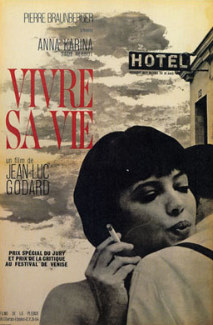No wave was an avant-garde music genre and visual art scene that emerged in the late 1970s in Downtown New York City. The term was a pun based on the rejection of commercial new wave music. Reacting against punk rock's recycling of rock and roll clichés, no wave musicians instead experimented with noise, dissonance, and atonality, as well as non-rock genres like free jazz, funk, and disco. The scene often reflected an abrasive, confrontational, and nihilistic world view.

The punk subculture includes a diverse and widely known array of ideologies, fashion, and other forms of expression, visual art, dance, literature, and film. Largely characterised by anti-establishment views, the promotion of individual freedom, and the DIY ethics, the culture originated from punk rock.
Shock rock is the combination of rock music or heavy metal music with highly theatrical live performances emphasizing shock value. Performances may include violent or provocative behavior from the artists, the use of attention-grabbing imagery such as costumes, masks, or face paint, or special effects such as pyrotechnics or fake blood. Shock rock also often includes elements of horror.
Transgressive art is art that aims to outrage or violate basic morals and sensibilities. The term transgressive was first used in this sense by American filmmaker Nick Zedd and his Cinema of Transgression in 1985. Zedd used it to describe his legacy with underground film-makers like Paul Morrissey, John Waters, and Kenneth Anger, and the relationship they shared with Zedd and his New York City peers in the early 1980s.

Nick Zedd was an American filmmaker, author, and painter based in Mexico City. He coined the term Cinema of Transgression in 1985 to describe a loose-knit group of like-minded filmmakers and artists using shock value and black humor in their work. These filmmakers and artistic collaborators included Richard Kern, Tessa Hughes Freeland, Lung Leg, Kembra Pfahler, and Lydia Lunch. Under numerous pen names, Zedd edited and wrote the Underground Film Bulletin (1984–1990) which publicized the work of these filmmakers. The Cinema of Transgression was explored in Jack Sargeant's book Deathtripping.
An underground film is a film that is out of the mainstream either in its style, genre or financing.

Vivre sa vie is a 1962 French New Wave drama film written and directed by Jean-Luc Godard. The film was released in the United States as My Life to Live and in the United Kingdom as It's My Life.
A Nazi punk is a neo-Nazi who is part of the punk subculture. The term also describes the related music genre, which is sometimes also referred to as hatecore. Nazi Punk music generally sounds like other forms of punk rock, but differs by having lyrics that express hatred of some ethnic minorities, Jews, communists, homosexuals, anarchists, and other perceived enemies. Most other punks reject Nazi punks.
No wave cinema was an underground filmmaking movement that flourished on the Lower East Side of New York City from about 1976 to 1985. Associated with the artists’ group Collaborative Projects, no wave cinema was a stripped-down style of guerrilla filmmaking that emphasized dark edgy mood and unrehearsed immediacy above many other artistic concerns – similar to the parallel no wave music movement in its raw and rapid style.
The Cinema of Transgression is a term coined by Nick Zedd in 1985 to describe a New York City–based underground film movement, consisting of a loose-knit group of artists using shock value and black humor in their films. Key players in this movement were Zedd, Kembra Pfahler, Tessa Hughes-Freeland, Casandra Stark, Beth B, Tommy Turner, Jon Moritsugu, Manuel DeLanda, David Wojnarowicz, Richard Kern, and Lydia Lunch, who in the late 1970s and mid-1980s began to make very low-budget films using cheap 8 mm cameras.

Bedrock is an EP by The Foetus All-Nude Revue released by Self Immolation/Some Bizzare in 1987.

Kembra Pfahler is an American performance artist and rock musician.

Girl, Interrupted is a 1999 American biographical psychological drama film written and directed by James Mangold, from a screenplay by Mangold, Lisa Loomer, and Anna Hamilton Phelan, and based on the 1993 memoir of the same name by Susanna Kaysen. Starring Winona Ryder, Angelina Jolie, Clea DuVall, Brittany Murphy, Elisabeth Moss, Jared Leto, Angela Bettis, Jeffrey Tambor, Vanessa Redgrave, and Whoopi Goldberg, the film follows a young woman who spends 18 months institutionalized at a psychiatric hospital following a suicide attempt.
Roger Sabin is an English writer about comics and lecturer at Central St. Martins.
French punk is punk rock from France. Punk rock developed in France in the mid-1970s, strongly influenced by the scenes in the United States and United Kingdom, but also influencing the latter. The first European Punk Rock Festival took place at Mont-de-Marsan in France in August 1976.
Sini Anderson is an American film director, producer, performance artist, choreographer, dancer and poet, from Chicago, Illinois. Anderson is widely known for directing The Punk Singer (2013), a documentary about riot grrrl musician Kathleen Hanna's legacy and experience with late-stage Lyme disease.
Eric Mitchell is a French born writer, director, and actor who moved to downtown New York City in the early 1970s. He has acted in many No Wave films such as Permanent Vacation (1980) by Jim Jarmusch, but is best known for his own films that are usually written and directed by him: Kidnapped, Red Italy, Underground U.S.A. and The Way It Is or Eurydice in the Avenues, starring Steve Buscemi, Vincent Gallo, Mark Boone Junior and Rockets Redglare. Mitchell worked out of New York City's sordid East Village area in conjunction with Colab and other performance artists and noise musicians. There he created a series of scruffy, deeply personal, short Super 8mm and 16mm films in which he combined darkly sinister images to explore the manner in which the individual is constrained by society.

Kill Your Idols is a documentary film about three decades of art punk bands in New York City, directed and produced by Scott Crary and executive produced by Dan Braun and Josh Braun. The film debuted at the 2004 Tribeca Film Festival, where it won the award for Best Documentary.
Tessa Hughes-Freeland is a British-born experimental film maker, writer living in New York City. Her films have screened internationally in North America, Europe and Australia and in prominent museums and galleries, including the Museum of Modern Art (MOMA); the Museum of Contemporary Art, Los Angeles; the Whitney Museum of American Art; the New Museum of Contemporary Art in New York; and the KW Institute of Contemporary Art in Berlin. She has collaborated on live multi-media projects with musicians like John Zorn and J. G. Thirlwell. She and Ela Troyano co-founded the New York Film Festival Downtown in 1984 and served as its co-directors until 1990. Hughes-Freeland later served as President of the Board of Directors of the Film-Makers Co-Operative in New York City from 1998-2001. She has published articles in numerous books, including “Naked Lens: Beat Cinema” and “No Focus: Punk Film,” and in periodicals including PAPER Magazine, Filmmaker magazine, GQ, the East Village Eye, and Film Threat.
Surfin' Guitars: Instrumental Surf Bands of the Sixties is a book by Robert J. Dalley which covers the instrumental side of the surf genre in the 1960s and looks at groups and artists from that era. It has been published three times with the first version published in 1988 and the third in 2015. It has been quoted and referred to multiple times in books relating to surf music.






